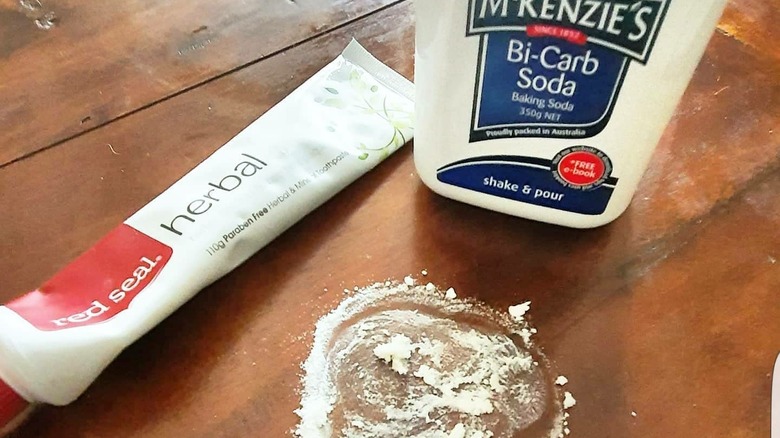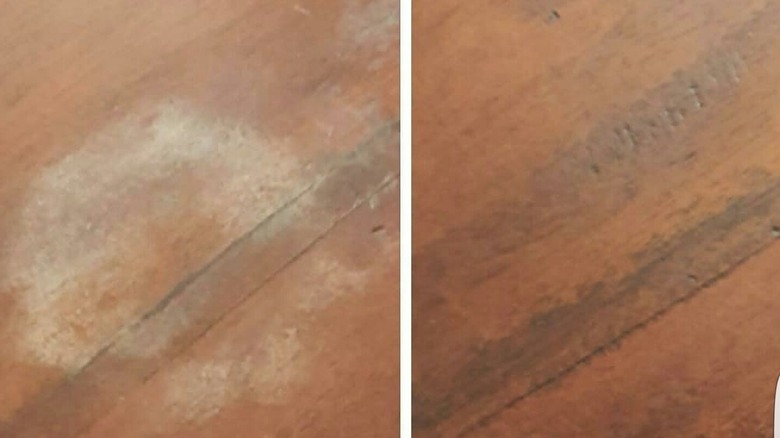Can Toothpaste Really Remove Heat Stains From Your Wooden Table?
If you're a principled respecter of wood, chances are your favorite wood furniture still looks new after all these years. However, when hosting house parties or movie nights with friends, well-meaning guests may not pay your furniture the respect it deserves. And one scalding hot pot or mug on your wood table may be enough to leave an unsightly scar.
Heat stains happen fast and often without warning. For instance, it might be a must-follow rule in your home to place folded towels or potholders on your table before setting food on it. But guests may be ignorant of this unposted dictate, and even family members may forget to practice their due diligence. The good news is that you can use toothpaste to remove these stubborn stains. The method is incredibly simple to follow, plus you don't have to use any special ingredients. In addition, you won't need to hire a professional to refinish the product or use harmful household products. Once you get the procedure right and have some free time, you can return the glory that a heat stain stole from your cherished wooden table.
How you can use toothpaste to remove heat stains
Before we even go to the procedure, it's essential to understand how the method works. Toothpaste is alkaline, which causes a restorative reaction when it comes into contact with heat stains. However, not all types of toothpaste are suitable for this DIY cleaning method. So don't use the gel type; instead, opt for plain white toothpaste.
First, remove dirt and oils from the wood surface by wiping it with a damp cloth and then dry the area. Next, you need to mix toothpaste with baking soda. Remember, the correct ratio is 1 part toothpaste to 2 parts baking soda. Once the resulting paste is ready, apply it to the stain and give it up to 10 minutes to penetrate the wood. After that, gently remove the solution from the area. However, ensure the paste doesn't spread to areas that are not stained because it can eliminate the finish, leaving the wood looking dull and uninviting. The final step is using a dry cloth to wipe the table. If the stains persist, you can repeat the procedure for more satisfying results.
Black and white heat stains: What's the difference?
While black heat stains are caused by heat alone, white heat marks are formed by a combination of moisture and heat. So what exactly happens? Every time you place something hot on a wooden table, whether a cup of coffee or a frying pan, the temperature increases, causing the wood to expand. As a result, pores open, allowing water to penetrate. After some time, the temperature lowers, leading to the wood contracting, and the pores close with water still inside. That trapped moisture is what causes the white discoloration.
That said, prevention is always better than trying to remedy a situation. As such, it's ideal to avoid incidences that cause heat stains. For example, you can decorate your coffee table with stylish coasters or waterproof a dining table by applying wax, epoxy resin, or varnish. Since you may not know what amount of heat can lead to these marks, make it compulsory to place any hot item on something that acts as a cushion. And before hosting your next dinner party, ensure your guests are capable of respecting your wooden furniture.


